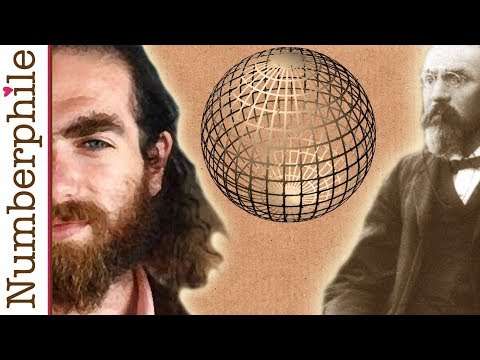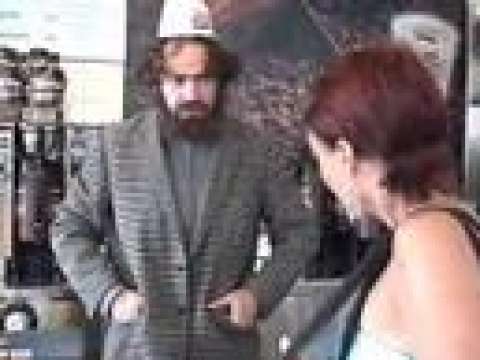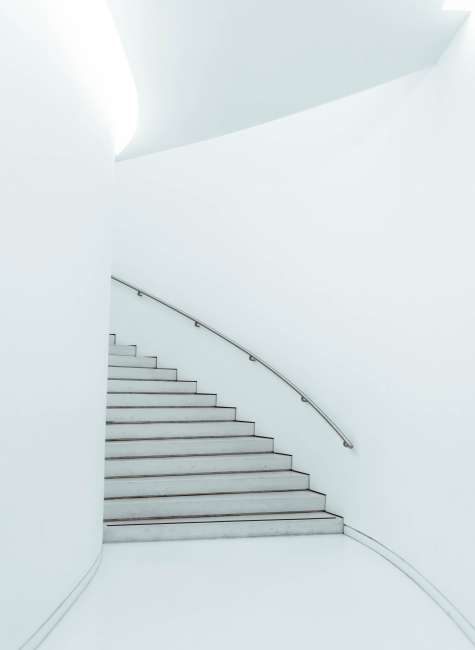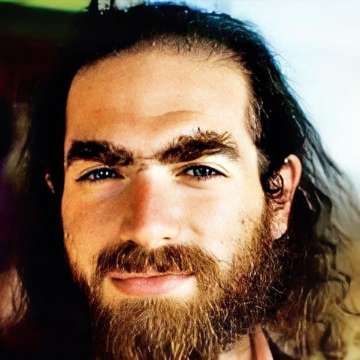

Grigori Perelman
If the proof is correct then no other recognition is needed
Grigori Yakovlevich Perelman is a Russian mathematician who is known for his contributions to the fields of geometric analysis, Riemannian geometry, and geometric topology.
In the 1990s, partly in collaboration with Yuri Burago, Mikhael Gromov, and Anton Petrunin, he made influential contributions to the study of Alexandrov spaces. In 1994, he proved the soul conjecture in Riemannian geometry, which had been an open problem for the previous 20 years. In 2002 and 2003, he developed new techniques in the analysis of Ricci flow, thereby providing a detailed sketch of a proof of the Poincaré conjecture and Thurston's geometrization conjecture, the former of which had been a famous open problem in mathematics for the past century. The full details of Perelman's work were filled in and explained by various authors over the following several years.
In August 2006, Perelman was offered the Fields Medal for "his contributions to geometry and his revolutionary insights into the analytical and geometric structure of the Ricci flow", but he declined the award, stating: "I'm not interested in money or fame; I don't want to be on display like an animal in a zoo." On 22 December 2006, the scientific journal Science recognized Perelman's proof of the Poincaré conjecture as the scientific "Breakthrough of the Year", the first such recognition in the area of mathematics.
On 18 March 2010, it was announced that he had met the criteria to receive the first Clay Millennium Prize for resolution of the Poincaré conjecture. On 1 July 2010, he rejected the prize of one million dollars, saying that he considered the decision of the board of the Clay Institute to be unfair, in that his contribution to solving the Poincaré conjecture was no greater than that of Richard S. Hamilton, the mathematician who pioneered the Ricci flow partly with the aim of attacking the conjecture. He had previously rejected the prestigious prize of the European Mathematical Society, in 1996.
Early life and education
Grigori Yakovlevich Perelman was born in Leningrad, Soviet Union now Saint Petersburg, Russia on 13 June 1966, to Russian-Jewish parents Yakov who now lives in Israel and Lyubov who still lives in Saint Petersburg with Grigori. Grigori's mother Lyubov gave up graduate work in mathematics to raise him. Grigori's mathematical talent became apparent at the age of ten, and his mother enrolled him in Sergei Rukshin's after-school mathematics training program.
His mathematical education continued at the Leningrad Secondary School #239, a specialized school with advanced mathematics and physics programs. Grigori excelled in all subjects except physical education. In 1982, as a member of the Soviet Union team competing in the International Mathematical Olympiad, an international competition for high school students, he won a gold medal, achieving a perfect score. He continued as a student of The School of Mathematics and Mechanics at the Leningrad State University, without admission examinations and enrolled to the university.
After completing his PhD in 1990, Perelman began work at the Leningrad Department of Steklov Institute of Mathematics of the USSR Academy of Sciences, where his advisors were Aleksandr Aleksandrov and Yuri Burago. In the late 1980s and early 1990s, with a strong recommendation from the geometer Mikhail Gromov, Perelman obtained research positions at several universities in the United States. In 1991 Perelman won the Young Mathematician Prize of the St. Petersburg Mathematical Society for his work on Aleksandrov's spaces of curvature bounded from below. In 1992, he was invited to spend a semester each at the Courant Institute in New York University and Stony Brook University where he began work on manifolds with lower bounds on Ricci curvature. From there, he accepted a two-year Miller Research Fellowship at the University of California, Berkeley in 1993. After having proved the soul conjecture in 1994, he was offered jobs at several top universities in the US, including Princeton and Stanford, but he rejected them all and returned to the Steklov Institute in Saint Petersburg in the summer of 1995 for a research-only position.
Research in the 1990s
Perelman's most notable work in this period was in the field of Alexandrov spaces, the concept of which dates back to the 1950s. In a well-known 1992 paper coauthored with Yuri Burago and Mikhail Gromov, Perelman laid out the modern foundations of this field, with the notion of Gromov-Hausdorff convergence as an organizing principle. In 1993, Perelman developed a notion of Morse theory on these non-smooth spaces. For his work on Alexandrov spaces, Perelman was invited to lecture at the 1994 International Congress of Mathematicians.
Cheeger and Gromoll's soul conjecture, formulated in 1972, says:
Suppose (M, g) is a complete, connected and non-compact Riemannian manifold with sectional curvature K ≥ 0, and there exists a point in M where the sectional curvature (in all sectional directions) is strictly positive. Then the soul of M is a point; equivalently M is diffeomorphic to Rn.
This was of interest since Cheeger and Gromoll had established the result under the stronger assumption that all sectional curvatures are positive. As the deformation from nonnegative to positive curvature is not well understood, the soul conjecture was proposed. In 1994, Perelman gave a short and elegant proof of the conjecture by establishing that in the general case K ≥ 0, Sharafutdinov's retraction P : M → S is a submersion.
Three notable papers of Perelman's from 1994 to 1997 deal with the construction of various interesting Riemannian manifolds with positive Ricci curvature.
Geometrization and Poincaré conjectures
The problem
The Poincaré conjecture, proposed by French mathematician Henri Poincaré in 1904, was one of the key problems in topology. Any loop on a 3-sphere—as exemplified by the set of points at a distance of 1 from the origin in four-dimensional Euclidean space—can be contracted into a point. The Poincaré conjecture asserts that any closed three-dimensional manifold, such that any loop can be contracted into a point, is topologically a 3-sphere. The analogous result has been known to be true in dimensions greater than or equal to five since 1960 as in the work of Stephen Smale. The four-dimensional case resisted longer, finally being solved in 1982 by Michael Freedman. But the case of three-manifolds turned out to be the hardest of them all. Roughly speaking, this is because in topologically manipulating a three-manifold there are too few dimensions to move "problematic regions" out of the way without interfering with something else. The most fundamental contribution to the three-dimensional case had been produced by Richard S. Hamilton. The role of Perelman was to complete the Hamilton program.
Perelman's proof
In November 2002, Perelman posted the first of three preprints to the arXiv, in which he claimed to have outlined a proof of the geometrization conjecture, of which the Poincaré conjecture is a particular case. This was followed by the two other preprints in 2003.
Perelman modified Richard S. Hamilton's program for a proof of the conjecture. The central idea is the notion of the Ricci flow. Hamilton's fundamental idea is to formulate a "dynamical process" in which a given three-manifold is geometrically distorted, with the distortion process governed by a differential equation analogous to the heat equation. The heat equation which much earlier motivated Riemann to state his Riemann hypothesis on the zeros of the zeta function describes the behavior of scalar quantities such as temperature. It ensures that concentrations of elevated temperature will spread out until a uniform temperature is achieved throughout an object. Similarly, the Ricci flow describes the behavior of a tensorial quantity, the Ricci curvature tensor. Hamilton's hope was that under the Ricci flow concentrations of large curvature will spread out until a uniform curvature is achieved over the entire three-manifold. If so, if one starts with any three-manifold and lets the Ricci flow occur, then one should, in principle, eventually obtain a kind of "normal form". According to William Thurston this normal form must take one of a small number of possibilities, each having a different kind of geometry, called Thurston model geometries.
However, it was widely expected that the process would be impeded by developing "singularities." In the 1990s, Hamilton made progress on understanding the possible types of singularities which may occur, but was unable to provide a comprehensive description. Perelman's articles sketched a solution. According to Perelman, every singularity looks either like a cylinder collapsing to its axis, or a sphere collapsing to its center. With this understanding, he was able to construct a modification of the standard Ricci flow, called Ricci flow with surgery, which can systematically excise singular regions as they develop, in a controlled way. The idea for Ricci flow with surgery had been present since a 1993 article of Hamilton, who had successfully carried it out in 1997 in the setting of higher-dimensional spaces subject to certain restricted geometric conditions. Perelman's surgery procedure was broadly similar to Hamilton's but was strikingly different in its technical aspects.
Perelman showed that any singularity that develops in a finite time is essentially a "pinching" along certain spheres corresponding to the prime decomposition of the 3-manifold. Furthermore, any "infinite time" singularities result from certain collapsing pieces of the JSJ decomposition. Perelman's work proves this claim and thus proves the geometrization conjecture.
The contents of the three papers are summarized below:
- The first preprint, The entropy formula for the Ricci flow and its geometric applications, provides many novel techniques in the study of Ricci flow, the principal result of which is a theorem giving a quantitative characterization of high-curvature regions of the flow.
- The second preprint, Ricci flow with surgery on three-manifolds, fixed some incorrect statements of the first paper and fills in some details, and uses the main result of the first paper to prescribe the surgery procedure. The second half of the paper is devoted to an analysis of Ricci flows which exist for infinite time.
- The third preprint, Finite extinction time for the solutions to the Ricci flow on certain three-manifolds, provides a shortcut to the proof of the Poincaré conjecture which avoids the arguments in the second half of the second preprint. It shows that on any space satisfying the assumptions of the Poincaré conjecture, the Ricci flow with surgery exists only for finite time, so that the infinite-time analysis of Ricci flow is irrelevant.
Tobias Colding and William Minicozzi II have provided a completely alternative argument to Perelman's third preprint. Their argument, given the prerequisite of some sophisticated geometric measure theory arguments as developed in the 1980s, is particularly simple.
Verification
Perelman's preprints quickly gained the attention of the mathematical community, although they were widely seen as hard to understand since they had been written somewhat tersely. Against the usual style in academic mathematical publications, many technical details had been omitted. It was soon apparent that Perelman had made major contributions to the foundations of Ricci flow, although it was not immediately clear to the mathematical community that these contributions were sufficient to prove the geometrization conjecture or the Poincaré conjecture.
In April 2003, Perelman visited the Massachusetts Institute of Technology, Princeton University, Stony Brook University, Columbia University and New York University to give short series of lectures on his work, and to clarify some details for experts in the relevant fields.
In June 2003, Bruce Kleiner and John Lott, both then of the University of Michigan, posted notes on Lott's website which, section by section, filled in many of the details in Perelman's first preprint. In September 2004, their notes were updated to include Perelman's second preprint. Following further revisions and corrections, they posted a version to the arXiv on 25 May 2006, a modified version of which was published in the academic journal Geometry & Topology in 2008. At the 2006 International Congress of Mathematicians, Lott said "It has taken us some time to examine Perelman's work. This is partly due to the originality of Perelman's work and partly to the technical sophistication of his arguments. All indications are that his arguments are correct." In the introduction to their article, Kleiner and Lott explained
Perelman's proofs are concise and, at times, sketchy. The purpose of these notes is to provide the details that are missing in [Perelman's first two preprints]... Regarding the proofs, [Perelman's papers] contain some incorrect statements and incomplete arguments, which we have attempted to point out to the reader. (Some of the mistakes in [Perelman's first paper] were corrected in [Perelman's second paper].) We did not find any serious problems, meaning problems that cannot be corrected using the methods introduced by Perelman.
In June 2006, the Asian Journal of Mathematics published an article by Zhu Xiping of Sun Yat-sen University in China and Huai-Dong Cao of Lehigh University in Pennsylvania, giving a complete description of Perelman's proof of the Poincaré and the geometrization conjectures. Unlike Kleiner and Lott's article, which was structured as a collection of annotations to Perelman's papers, Cao and Zhu's article was aimed directly towards explaining the proofs of the Poincaré conjecture and geometrization conjecture. In their introduction, they explain
In this paper, we shall present the Hamilton-Perelman theory of Ricci flow. Based on it, we shall give the first written account of a complete proof of the Poincaré conjecture and the geometrization conjecture of Thurston. While the complete work is an accumulated efforts of many geometric analysts, the major contributors are unquestionably Hamilton and Perelman. [...] In this paper, we shall give complete and detailed proofs [...] especially of Perelman's work in his second paper in which many key ideas of the proofs are sketched or outlined but complete details of the proofs are often missing. As we pointed out before, we have to substitute several key arguments of Perelman by new approaches based on our study, because we were unable to comprehend these original arguments of Perelman which are essential to the completion of the geometrization program.
In July 2006, John Morgan of Columbia University and Gang Tian of the Massachusetts Institute of Technology posted a paper on the arXiv in which they provided a detailed presentation of Perelman's proof of the Poincaré conjecture. Unlike Kleiner-Lott and Cao-Zhu's expositions, Morgan and Tian's also deals with Perelman's third paper. On 24 August 2006, Morgan delivered a lecture at the ICM in Madrid on the Poincaré conjecture, in which he declared that Perelman's work had been "thoroughly checked." In 2008, Morgan and Tian posted a paper which covered the details of the proof of the geometrization conjecture. Morgan and Tian's two articles have been published in book form by the Clay Mathematics Institute.
Revisions of the verifications
All three of the expositions above have been revised after publication. Kleiner-Lott and Morgan-Tian's expositions were found to have errors which didn't affect the large scope, while Cao-Zhu's exposition attracted criticism for their phrasing and for an attributional error.
Since publication, Kleiner and Lott's article has subsequently been revised twice for corrections, such as for an incorrect statement of Hamilton's important "compactness theorem" for Ricci flow. The latest revision to their article was in 2013. In 2015, Abbas Bahri pointed out an error in Morgan and Tian's exposition, which was later fixed by Morgan and Tian and sourced to a basic computational mistake.
Cao and Zhu's paper underwent criticism from some parts of the mathematical community for their word choices, which some observers interpreted as claiming too much credit for themselves. The use of the word "application" in their title "A Complete Proof of the Poincaré and Geometrization Conjectures - Application of the Hamilton-Perelman Theory of Ricci Flow" and the phrase "This proof should be considered as the crowning achievement of the Hamilton-Perelman theory of Ricci flow" in the abstract were particularly singled out for criticism. When asked about the issue, Perelman said that Cao and Zhu had not contributed anything original, and had simply reworked his proof because they "did not quite understand the argument". Additionally, one of the pages of Cao and Zhu's article was essentially identical to one from Kleiner and Lott's 2003 posting. In a published erratum, Cao and Zhu attributed this to an oversight, saying that in 2003 they had taken down notes from the initial version of Kleiner and Lott's notes, and in their 2006 writeup had not realized the proper source of the notes. They posted a revised version to the arXiv with revisions in their phrasing and in the relevant page of the proof.
Current viewpoints
As of 2020, there remain some mathematicians who, although it is universally acknowledged that Perelman made tremendous strides in the theory of Ricci flow, do not accept that the Poincaré and geometrization conjectures have been proven. For these observers, the troublesome parts of the proof are in the second half of Perelman's second preprint. For instance, Fields medalist Shing-Tung Yau said in 2019 that
I am not certain that the proof is totally nailed down. [...]there are very few experts in the area of Ricci flow, and I have not yet met anyone who claims to have a complete understanding of the last, most difficult part of Perelman's proof [...] As far as I'm aware, no one has taken some of the techniques Perelman introduced toward the end of his paper and successfully used them to solve any other significant problem. This suggests to me that other mathematicians don't yet have full command of this work and its methodologies either.
By contrast, when the Millennium prize was awarded to Perelman for the "resolution of the Poincaré conjecture" in 2010, Fields medalist Simon Donaldson, in one of the laudations for the prize, said
From the time when [Perelman's] preprints concerning the Poincaré and Geometrisation Conjectures appeared, mathematicians around the world have been united in expressing their appreciation, awe and wonder at his extraordinary achievement, and I believe that I speak here as a representative of our whole intellectual community. [...] It solves an outstanding, century-old, problem.
Fields Medal and Millennium Prize
In May 2006, a committee of nine mathematicians voted to award Perelman a Fields Medal for his work on the Poincaré conjecture. However, Perelman declined to accept the prize. Sir John Ball, president of the International Mathematical Union, approached Perelman in Saint Petersburg in June 2006 to persuade him to accept the prize. After 10 hours of attempted persuasion over two days, Ball gave up. Two weeks later, Perelman summed up the conversation as follows: "He proposed to me three alternatives: accept and come; accept and don't come, and we will send you the medal later; third, I don't accept the prize. From the very beginning, I told him I have chosen the third one ... was completely irrelevant for me. Everybody understood that if the proof is correct, then no other recognition is needed." "I'm not interested in money or fame,' he is quoted to have said at the time. 'I don't want to be on display like an animal in a zoo. I'm not a hero of mathematics. I'm not even that successful; that is why I don't want to have everybody looking at me." Nevertheless, on 22 August 2006, Perelman was publicly offered the medal at the International Congress of Mathematicians in Madrid "for his contributions to geometry and his revolutionary insights into the analytical and geometric structure of the Ricci flow". He did not attend the ceremony, and declined to accept the medal, making him the only person to decline this prestigious prize.
He had previously rejected a prestigious prize from the European Mathematical Society.
On 18 March 2010, Perelman was awarded a Millennium Prize for solving the problem. On June 8, 2010, he did not attend a ceremony in his honor at the Institut Océanographique, Paris to accept his $1 million prize. According to Interfax, Perelman refused to accept the Millennium prize in July 2010. He considered the decision of the Clay Institute unfair for not sharing the prize with Richard S. Hamilton, and stated that "the main reason is my disagreement with the organized mathematical community. I don't like their decisions, I consider them unjust."
The Clay Institute subsequently used Perelman's prize money to fund the "Poincaré Chair", a temporary position for young promising mathematicians at the Paris Institut Henri Poincaré.
Possible withdrawal from mathematics
Perelman quit his job at the Steklov Institute in December 2005. His friends are said to have stated that he currently finds mathematics a painful topic to discuss; some even say that he has abandoned mathematics entirely.
Perelman is quoted in an article in The New Yorker saying that he is disappointed with the ethical standards of the field of mathematics. The article implies that Perelman refers particularly to alleged efforts of Fields medalist Shing-Tung Yau to downplay Perelman's role in the proof and play up the work of Cao and Zhu. Perelman added, "I can't say I'm outraged. Other people do worse. Of course, there are many mathematicians who are more or less honest. But almost all of them are conformists. They are more or less honest, but they tolerate those who are not honest." He has also said that "It is not people who break ethical standards who are regarded as aliens. It is people like me who are isolated."
This, combined with the possibility of being awarded a Fields medal, led him to quit professional mathematics. He has said that "As long as I was not conspicuous, I had a choice. Either to make some ugly thing or, if I didn't do this kind of thing, to be treated as a pet. Now, when I become a very conspicuous person, I cannot stay a pet and say nothing. That is why I had to quit." The New Yorker authors explained Perelman's reference to "some ugly thing" as "a fuss" on Perelman's part about the ethical breaches he perceived.
It is uncertain whether his resignation from Steklov and subsequent seclusion mean that he has ceased to practice mathematics. Fellow countryman and mathematician Yakov Eliashberg said that, in 2007, Perelman confided to him that he was working on other things but it was too premature to talk about it. He is said to have been interested in the past in the Navier–Stokes equations and the problem of their existence and smoothness.
In 2014, Russian media reported that Perelman was working in the field of nanotechnology in Sweden. However, shortly afterwards, he was spotted again in his native hometown, Saint Petersburg.
Perelman and the media
Perelman has avoided journalists and other members of the media. Masha Gessen, the author of Perfect Rigour: A Genius and the Mathematical Breakthrough of the Century, a book about him, was unable to meet him.
A Russian documentary about Perelman in which his work is discussed by several leading mathematicians including Mikhail Gromov was released in 2011 under the title "Иноходец. Урок Перельмана," "Maverick: Perelman's Lesson."
In April 2011, Aleksandr Zabrovsky, producer of "President-Film" studio, claimed to have held an interview with Perelman and agreed to shoot a film about him, under the tentative title The Formula of the Universe. Zabrovsky says that in the interview, Perelman explained why he rejected the one million dollar prize. A number of journalists believe that Zabrovky's interview is most likely a fake, pointing to contradictions in statements supposedly made by Perelman.
The writer Brett Forrest briefly interacted with Perelman in 2012. Perelman refuses to talk to journalists. One who managed to reach him on his mobile was told: "You are disturbing me. I am picking mushrooms."
Complete publication list
Dissertation
- Saddle surfaces in Euclidean spaces
Research papers
- Perelʹman, G.Ya. Realization of abstract k-skeletons as k-skeletons of intersections of convex polyhedra in R2k − 1. Geometric questions in the theory of functions and sets, 129–131, Kalinin. Gos. Univ., Kalinin, 1985.
- Polikanova, I.V.; Perelʹman, G.Ya. A remark on Helly's theorem. Sibirsk. Mat. Zh. 27 1986, no. 5, 191–194, 207.
- Perelʹman, G.Ya. On the k-radii of a convex body. Sibirsk. Mat. Zh. 28 1987, no. 4, 185–186.
- Perelʹman, G.Ya. Polyhedral saddle surfaces. Ukrain. Geom. Sb. No. 31 1988, 100–108. English translation in J. Soviet Math. 54 1991, no. 1, 735–740.
- Perelʹman, G.Ya. An example of a complete saddle surface in R4 with Gaussian curvature bounded away from zero. Ukrain. Geom. Sb. No. 32 1989, 99–102. English translation in J. Soviet Math. 59 1992, no. 2, 760–762.
- Burago, Yu.; Gromov, M.; Perelʹman, G. A.D. Aleksandrov spaces with curvatures bounded below. Uspekhi Mat. Nauk 47 1992, no. 2284, 3–51, 222. English translation in Russian Math. Surveys 47 1992, no. 2, 1–58. doi:10.1070/RM1992v047n02ABEH000877
- Perelʹman, G.Ya. Elements of Morse theory on Aleksandrov spaces. Algebra i Analiz 5 1993, no. 1, 232–241. English translation in St. Petersburg Math. J. 5 1994, no. 1, 205–213.
- Perelʹman, G.Ya.; Petrunin, A.M. Extremal subsets in Aleksandrov spaces and the generalized Liberman theorem. Algebra i Analiz 5 1993, no. 1, 242–256. English translation in St. Petersburg Math. J. 5 1994, no. 1, 215–227
- Perelman, G. Manifolds of positive Ricci curvature with almost maximal volume. J. Amer. Math. Soc. 7 1994, no. 2, 299–305. doi:10.1090/S0894-0347-1994-1231690-7
- Perelman, G. Proof of the soul conjecture of Cheeger and Gromoll. J. Differential Geom. 40 1994, no. 1, 209–212. doi:10.4310/jdg/1214455292
- Perelman, G. A diameter sphere theorem for manifolds of positive Ricci curvature. Math. Z. 218 1995, no. 4, 595–596. doi:10.1007/BF02571925
- Perelman, G. Widths of nonnegatively curved spaces. Geom. Funct. Anal. 5 1995, no. 2, 445–463. doi:10.1007/BF01895675
- Perelman, G. Spaces with curvature bounded below. Proceedings of the International Congress of Mathematicians, Vol. 1, 2 Zürich, 1994, 517–525, Birkhäuser, Basel, 1995. doi:10.1007/978-3-0348-9078-6 45
- Perelman, G. Collapsing with no proper extremal subsets. Comparison geometry Berkeley, CA, 1993–94, 149–155, Math. Sci. Res. Inst. Publ., 30, Cambridge Univ. Press, Cambridge, 1997.
- Perelman, G. Construction of manifolds of positive Ricci curvature with big volume and large Betti numbers. Comparison geometry Berkeley, CA, 1993–94, 157–163, Math. Sci. Res. Inst. Publ., 30, Cambridge Univ. Press, Cambridge, 1997.
- Perelman, G. A complete Riemannian manifold of positive Ricci curvature with Euclidean volume growth and nonunique asymptotic cone. Comparison geometry Berkeley, CA, 1993–94, 165–166, Math. Sci. Res. Inst. Publ., 30, Cambridge Univ. Press, Cambridge, 1997.
Unpublished work
- Perelman, G. Alexandrov's spaces with curvatures bounded from below II. 1991 See also: Kapovitch, Vitali. Perelman's stability theorem. Surveys in differential geometry. Vol. XI, 103–136, Surv. Differ. Geom., 11, Int. Press, Somerville, MA, 2007. doi:10.4310/SDG.2006.v11.n1.a5
- See also: Kapovitch, Vitali. Perelman's stability theorem. Surveys in differential geometry. Vol. XI, 103–136, Surv. Differ. Geom., 11, Int. Press, Somerville, MA, 2007. doi:10.4310/SDG.2006.v11.n1.a5
- Perelman, G.; Petrunin, A. Quasigeodesics and gradient curves in Alexandrov spaces. 1995
- Perelman, G. DC structure on Alexandrov space.
- Perelman, Grisha November 11, 2002. "The entropy formula for the Ricci flow and its geometric applications". arXiv:math.DG/0211159.
- Perelman, Grisha March 10, 2003. "Ricci flow with surgery on three-manifolds". arXiv:math.DG/0303109.
- Perelman, Grisha July 17, 2003. "Finite extinction time for the solutions to the Ricci flow on certain three-manifolds". arXiv:math.DG/0307245.
More facts
Geometric topology
Proof of the soul conjecture
Proof of the Poincaré conjecture













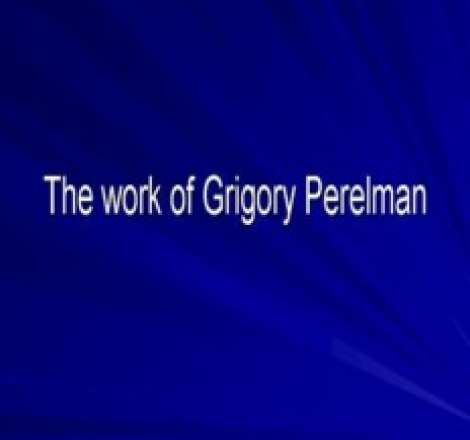
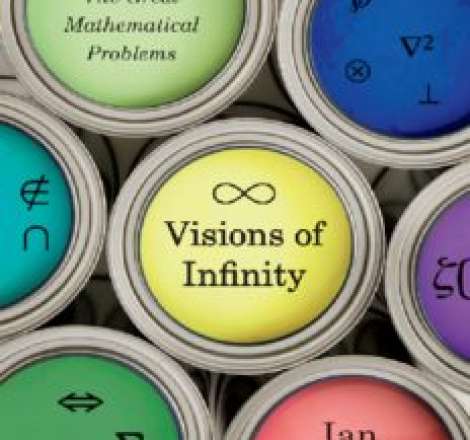



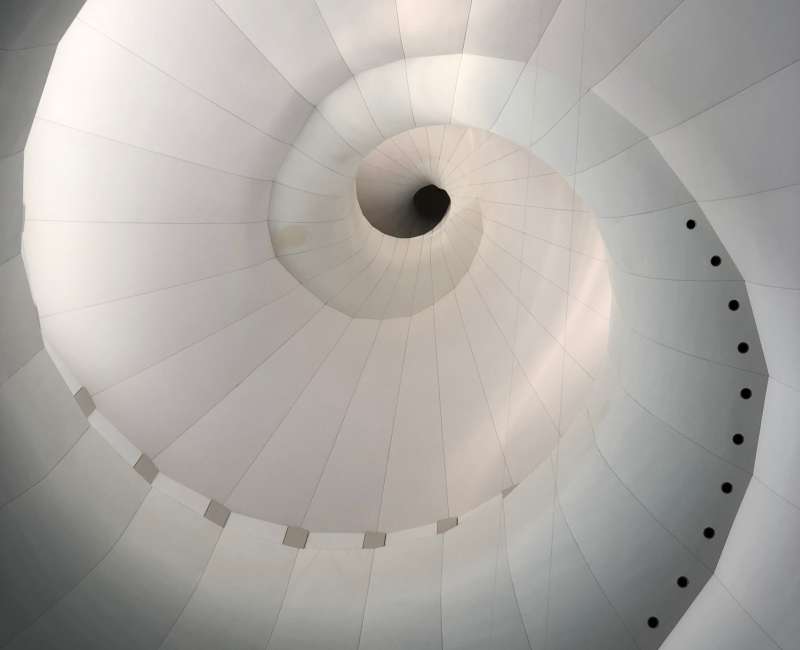


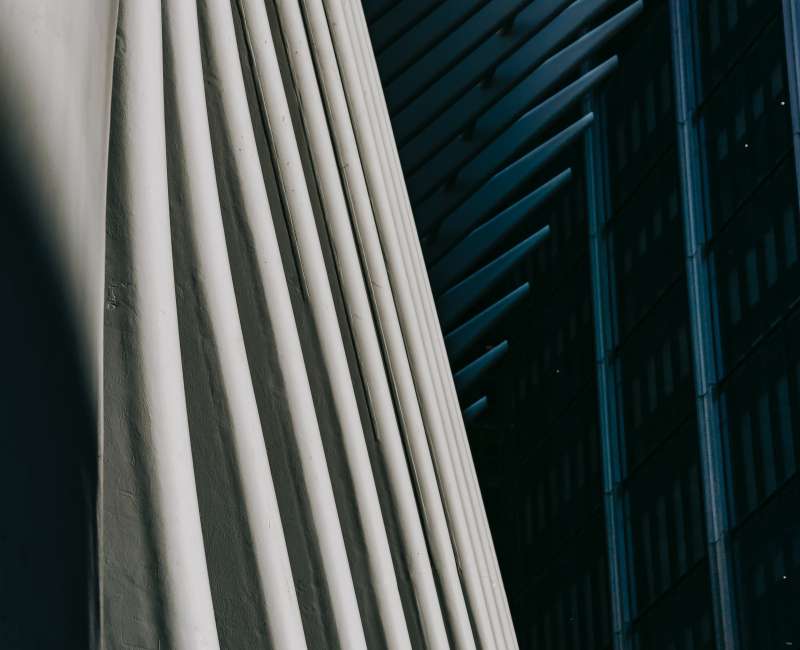


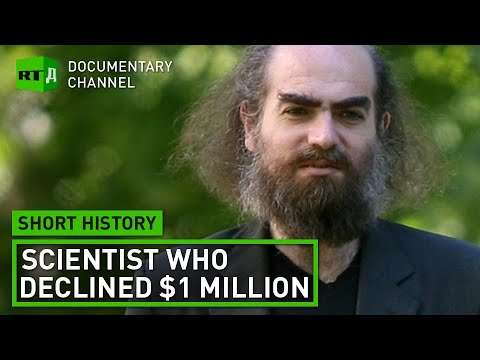
![Grigori Perelman [MMV] Boney M - Rasputin](https://geniuses.club/public/storage/095/099/190/042/480_360_60a795cf0e9bf..jpg)

